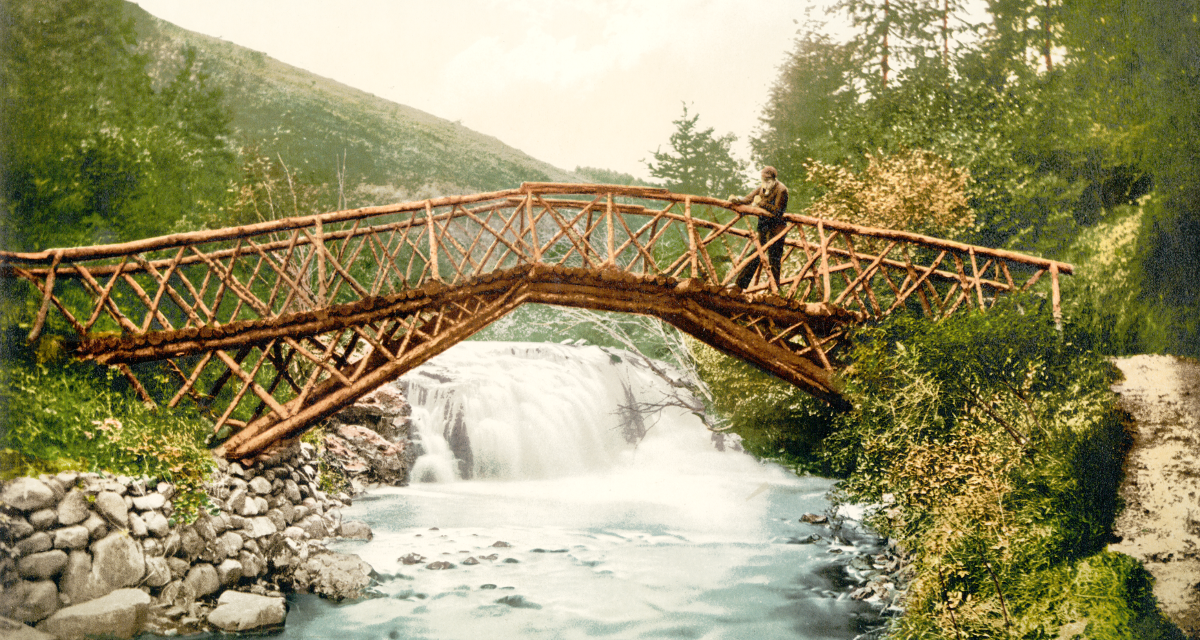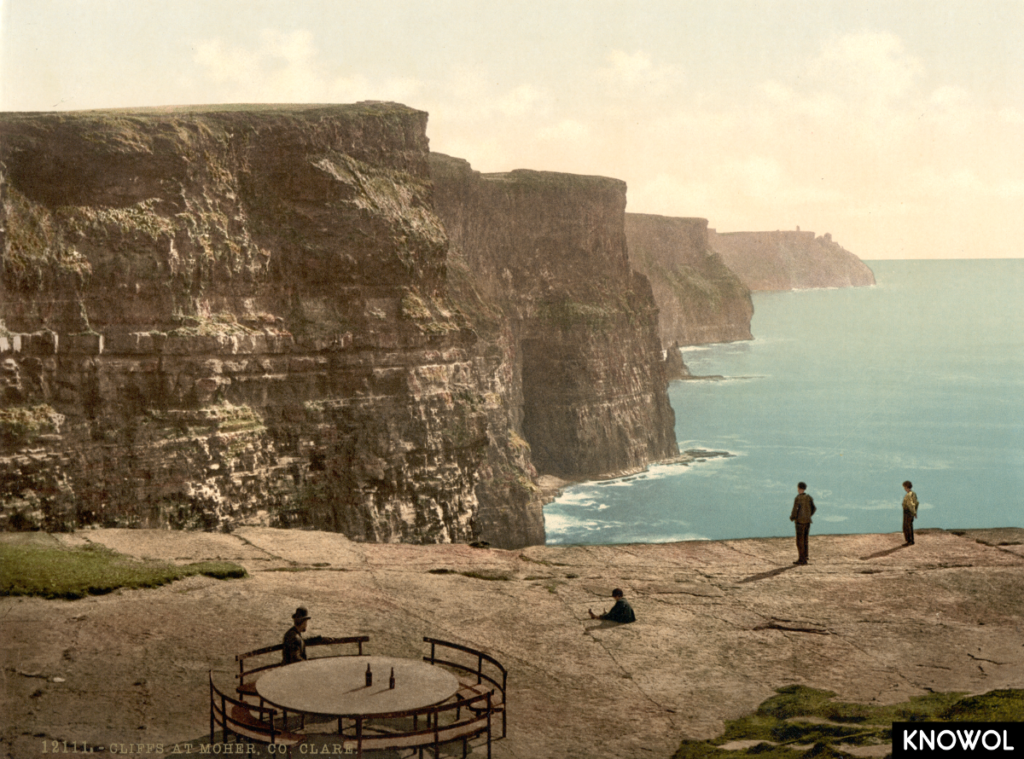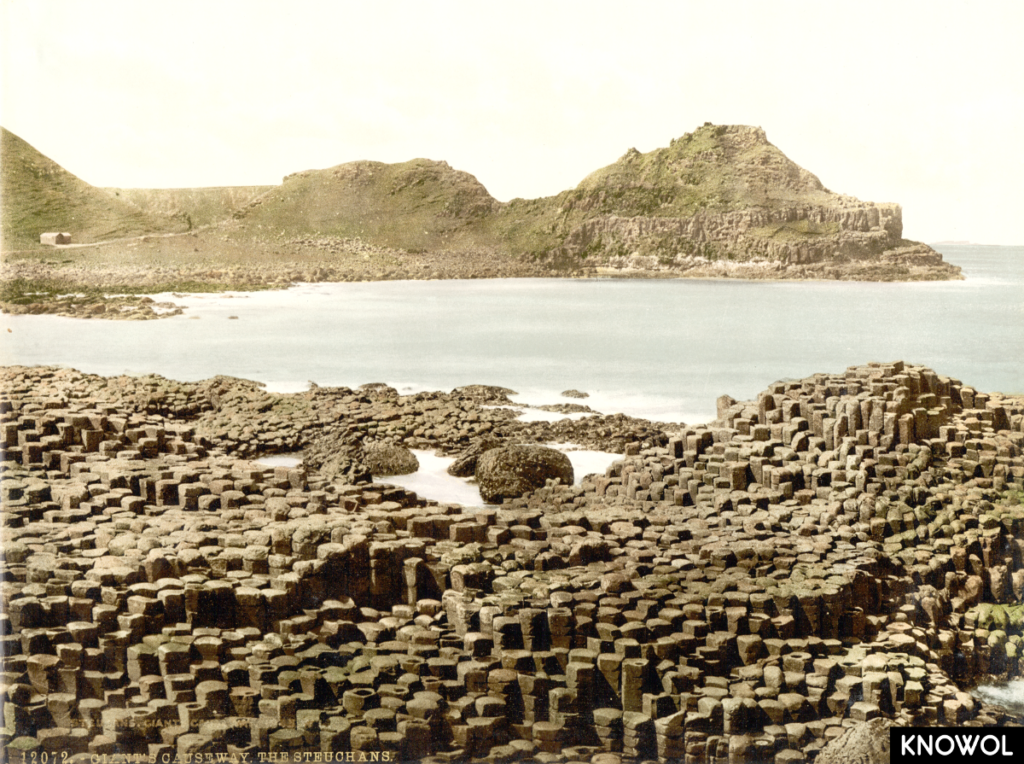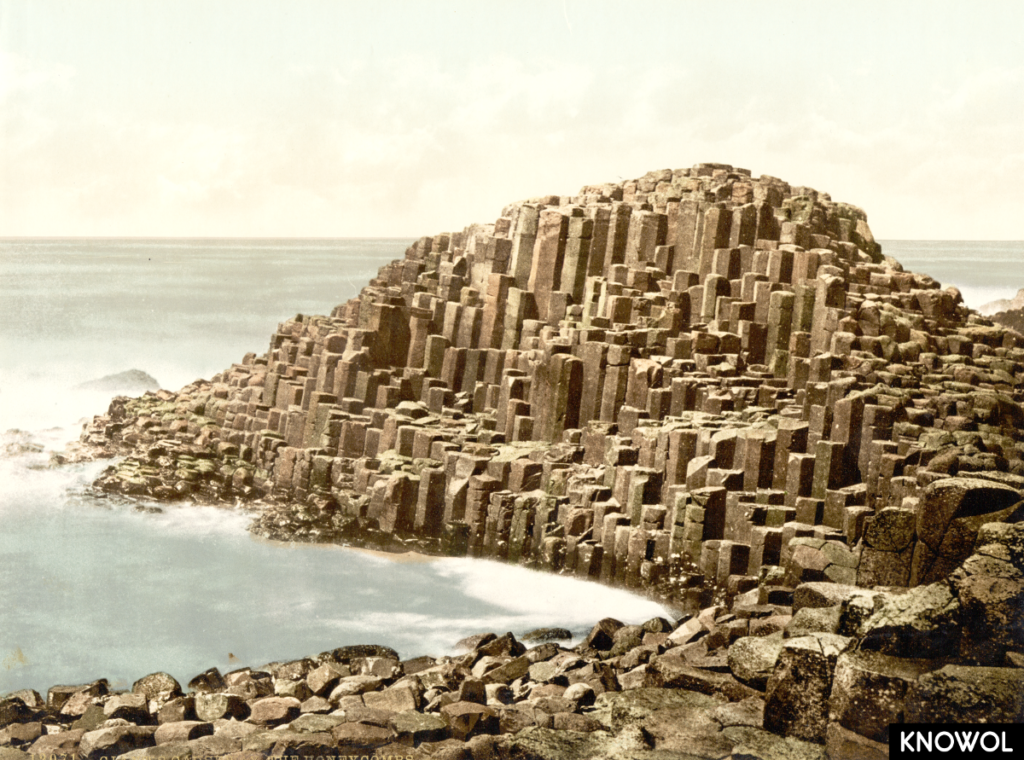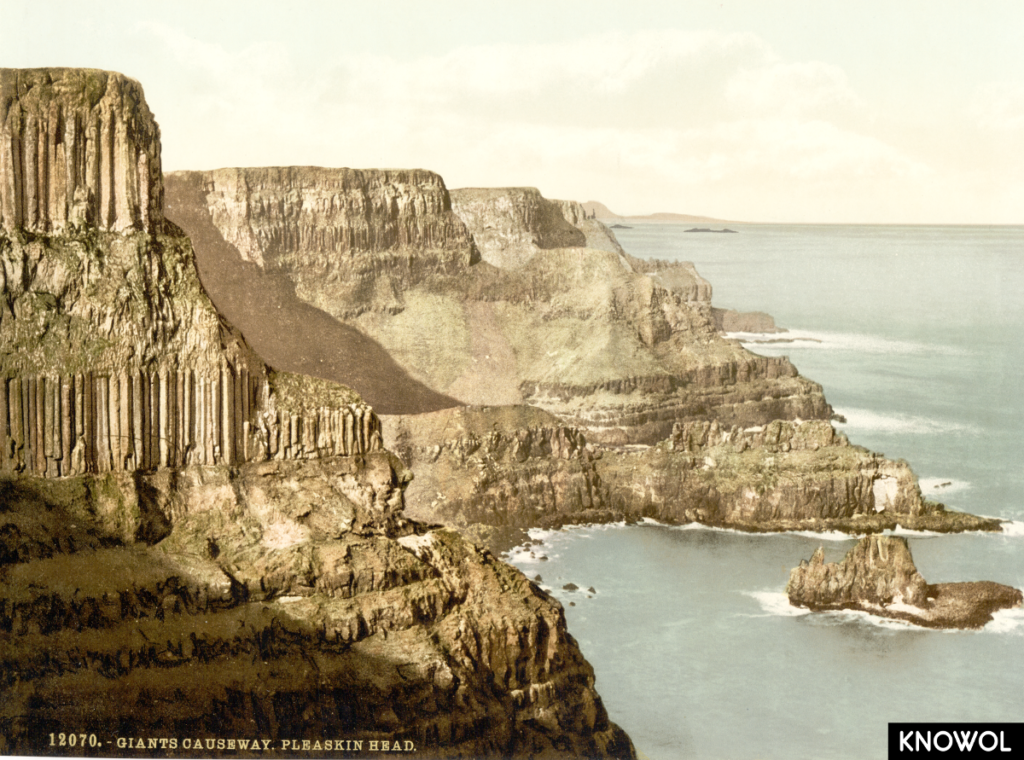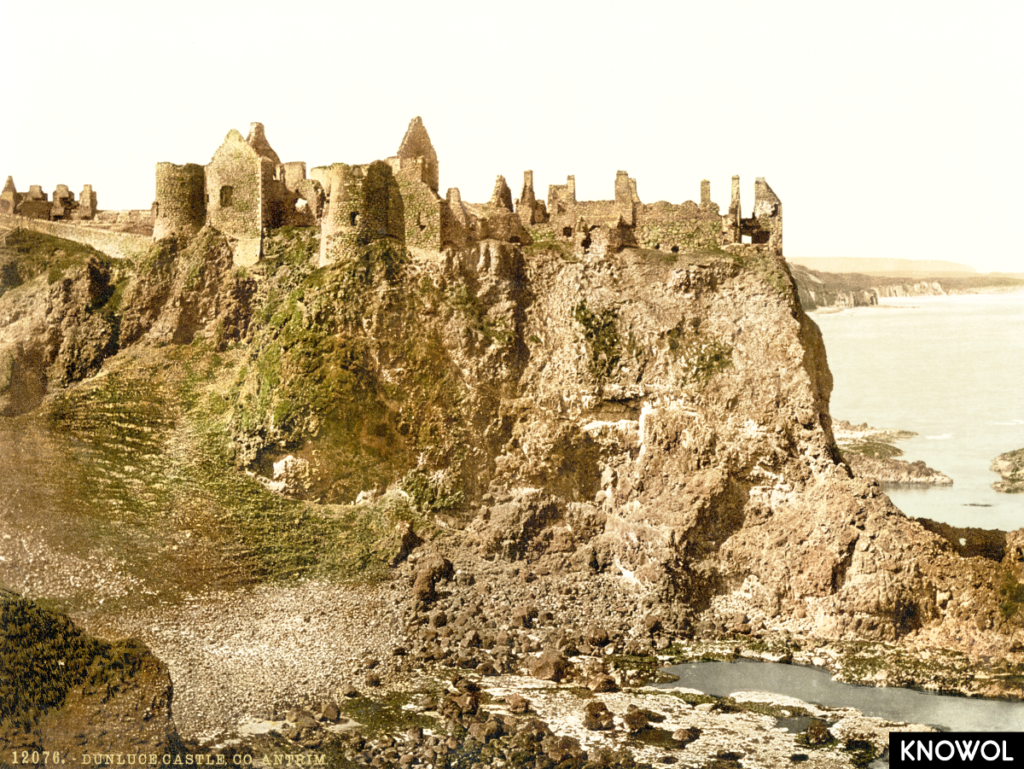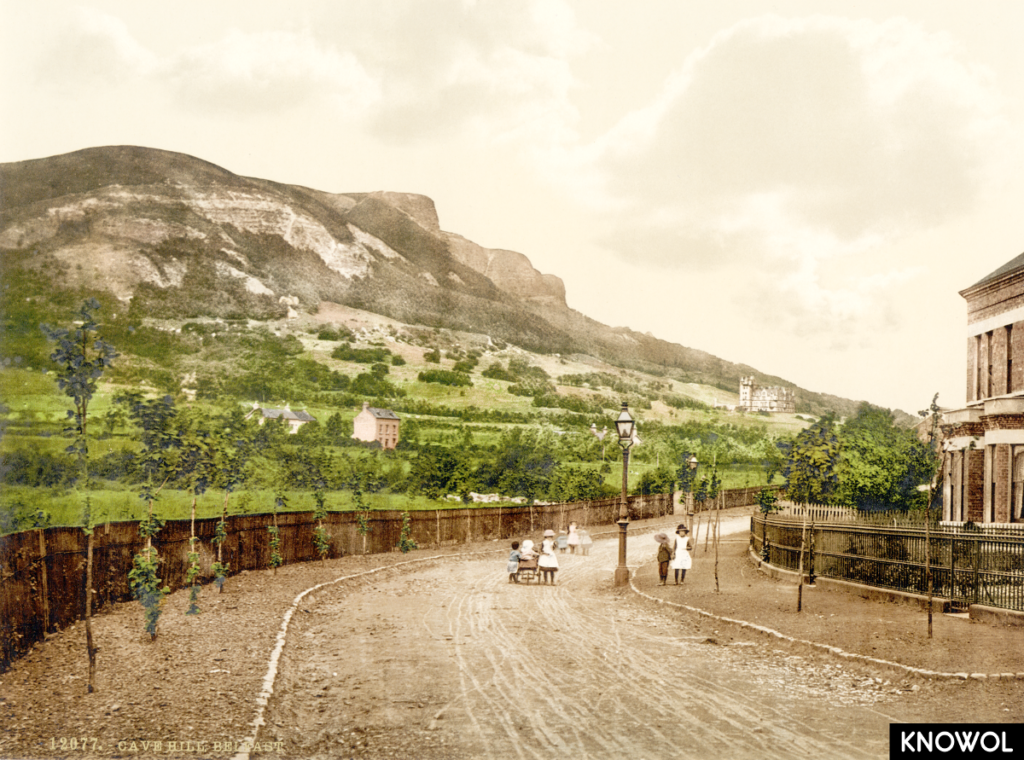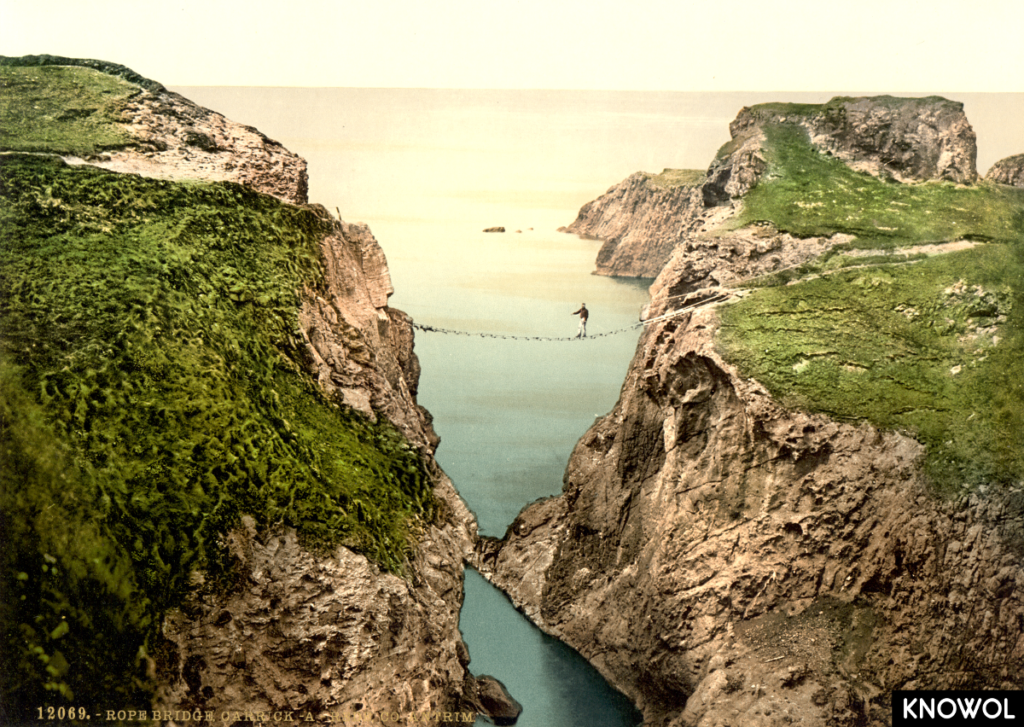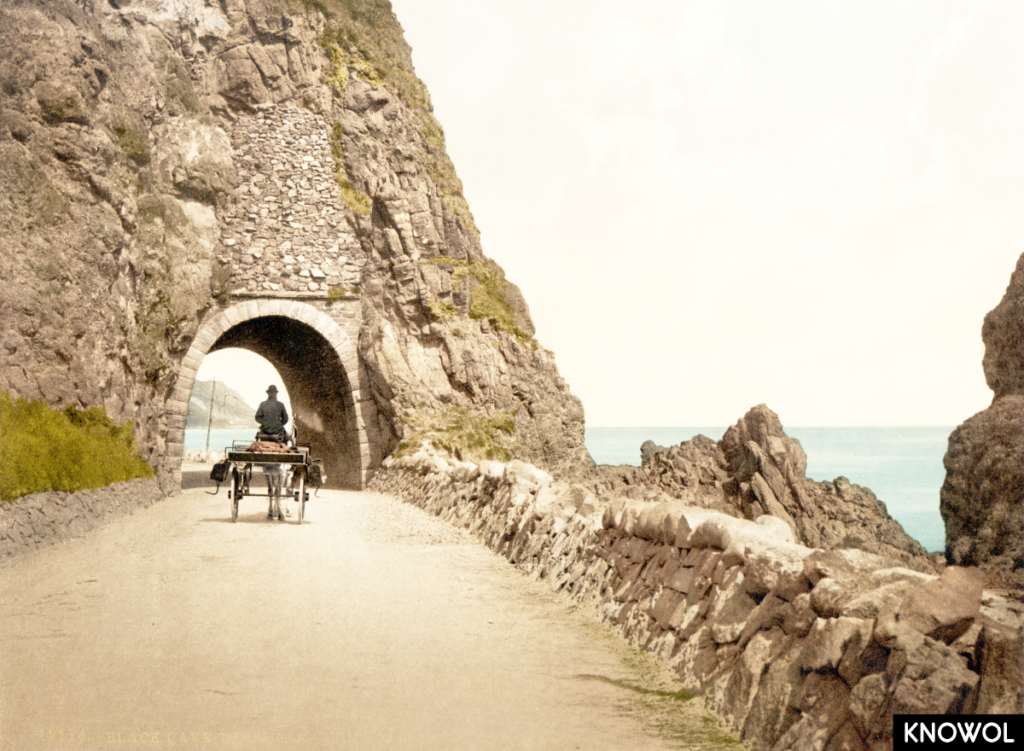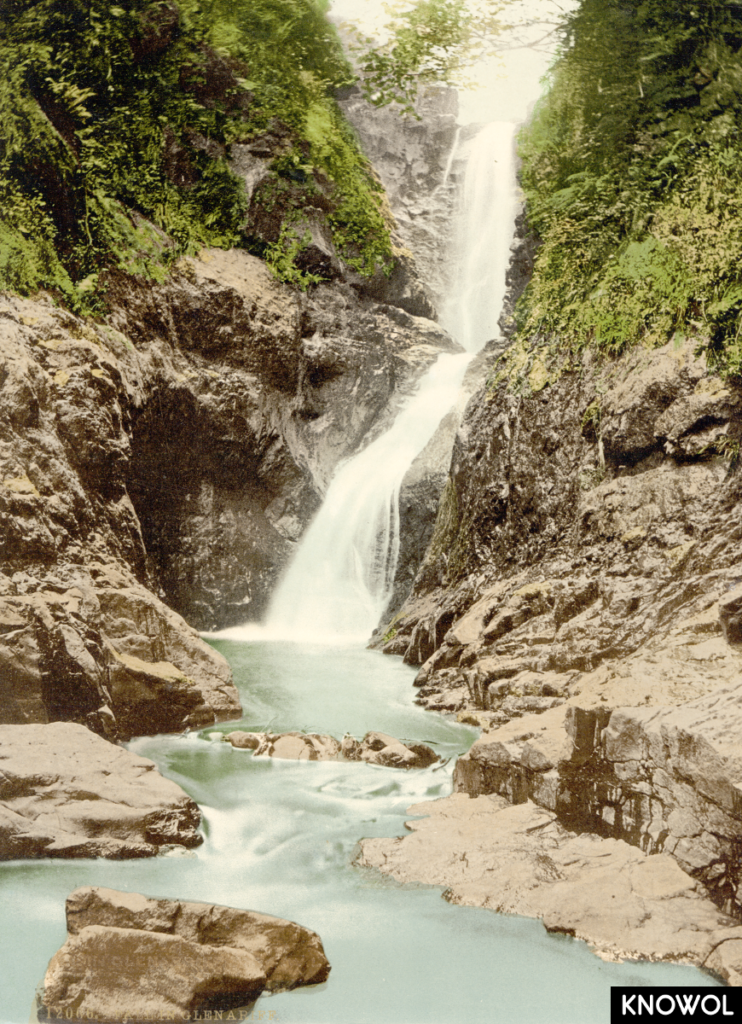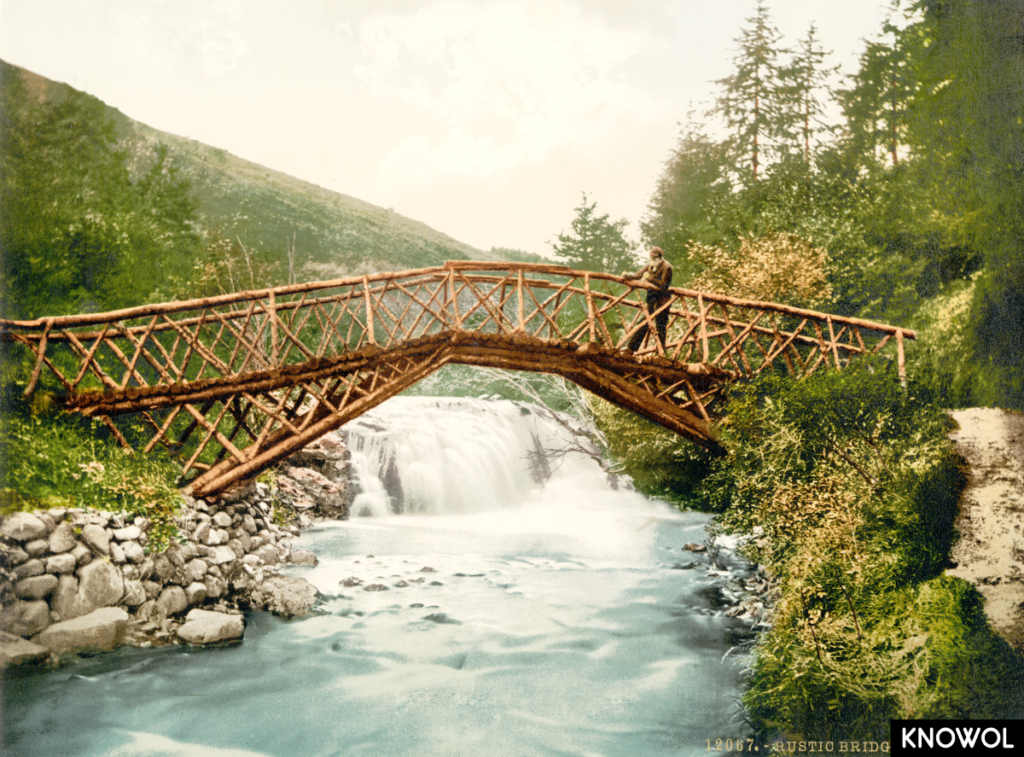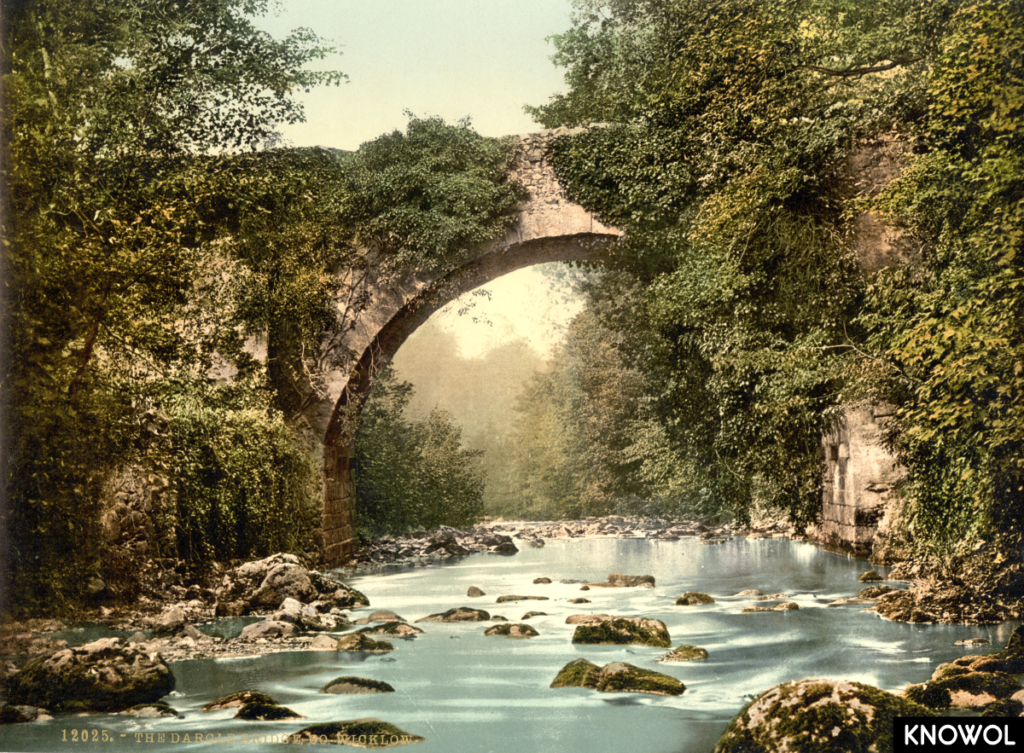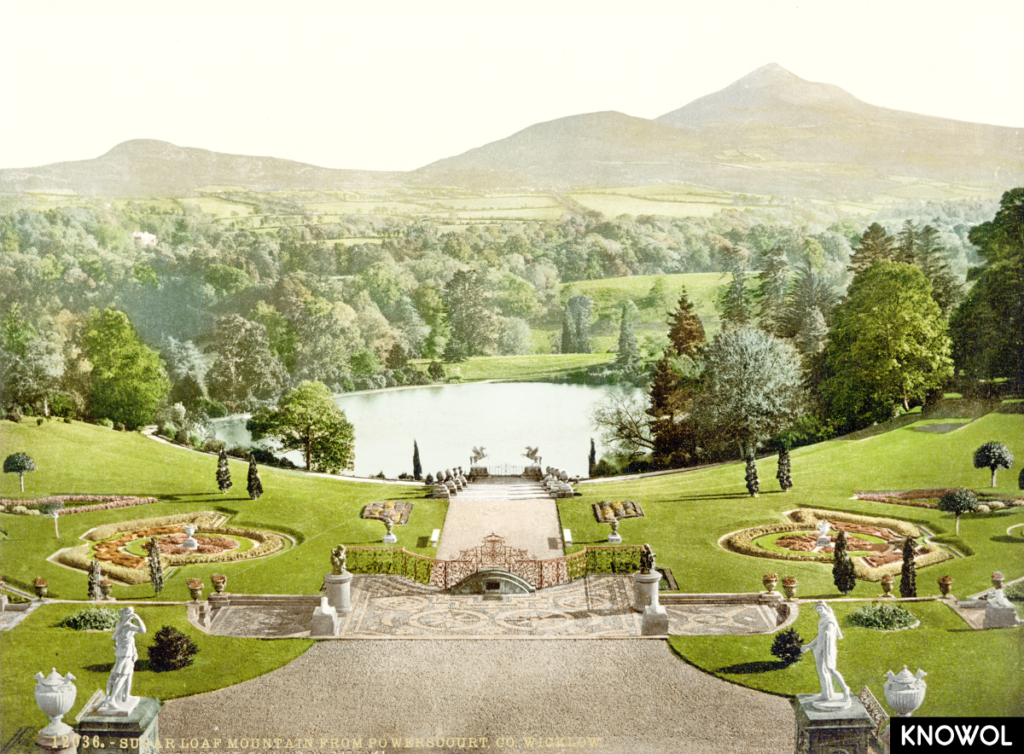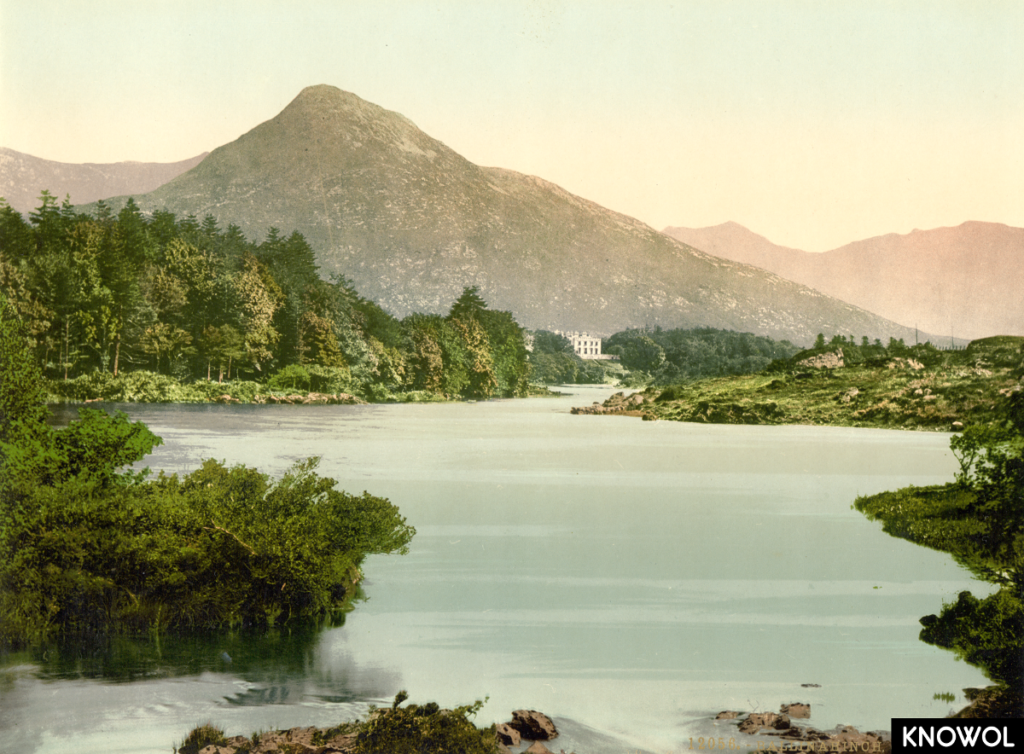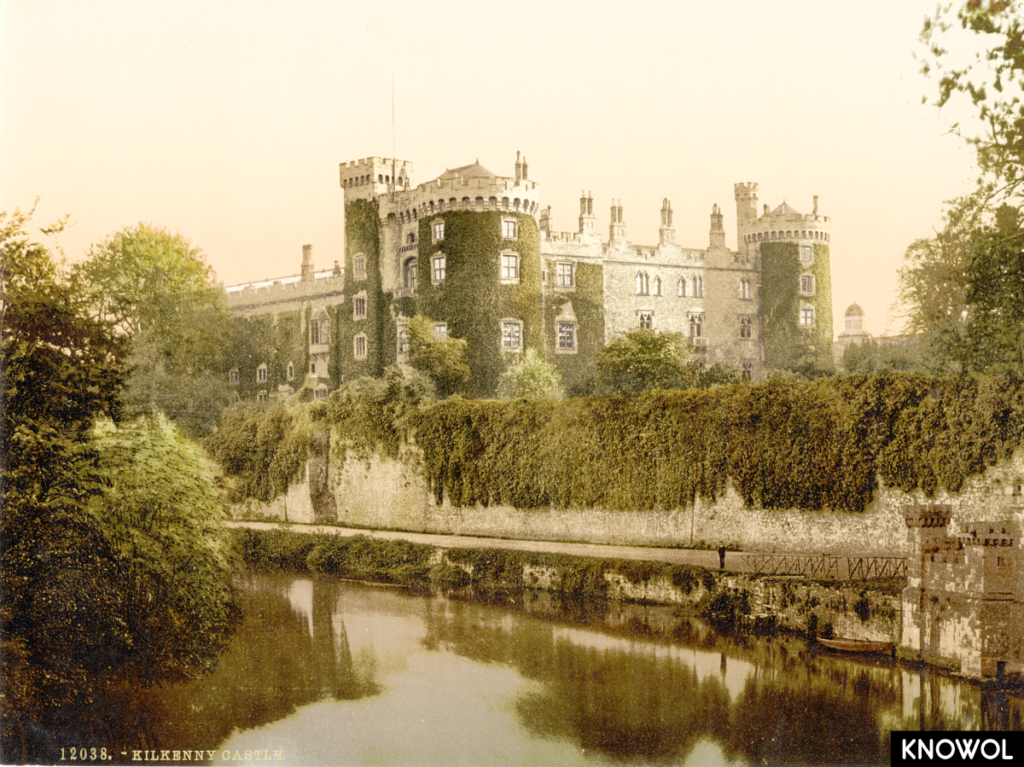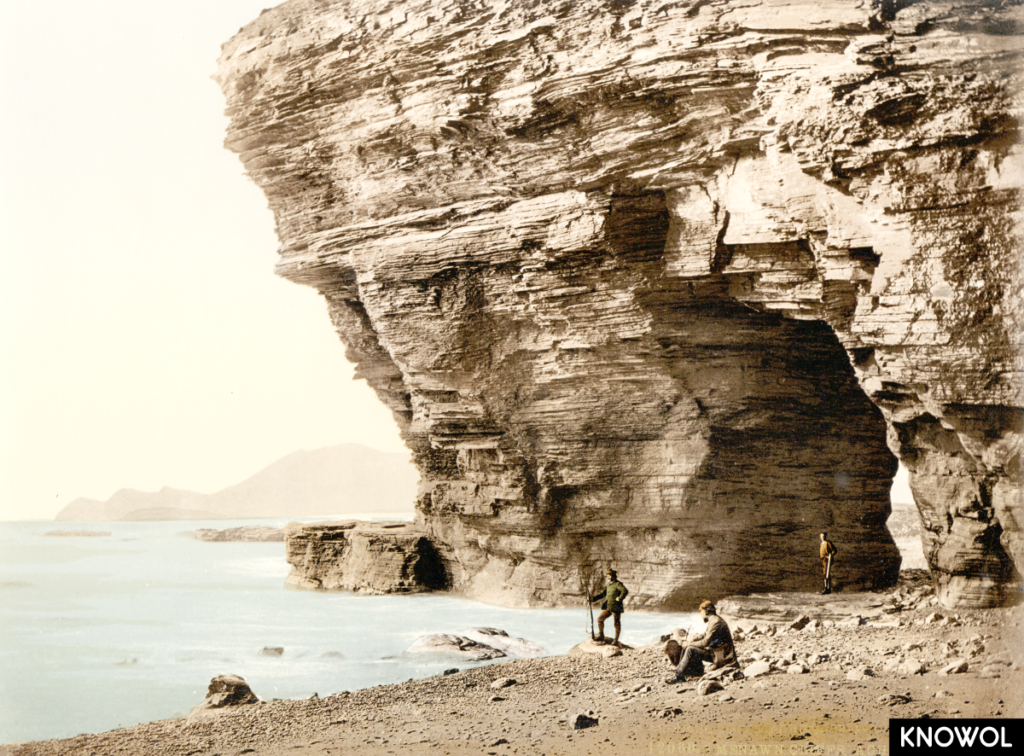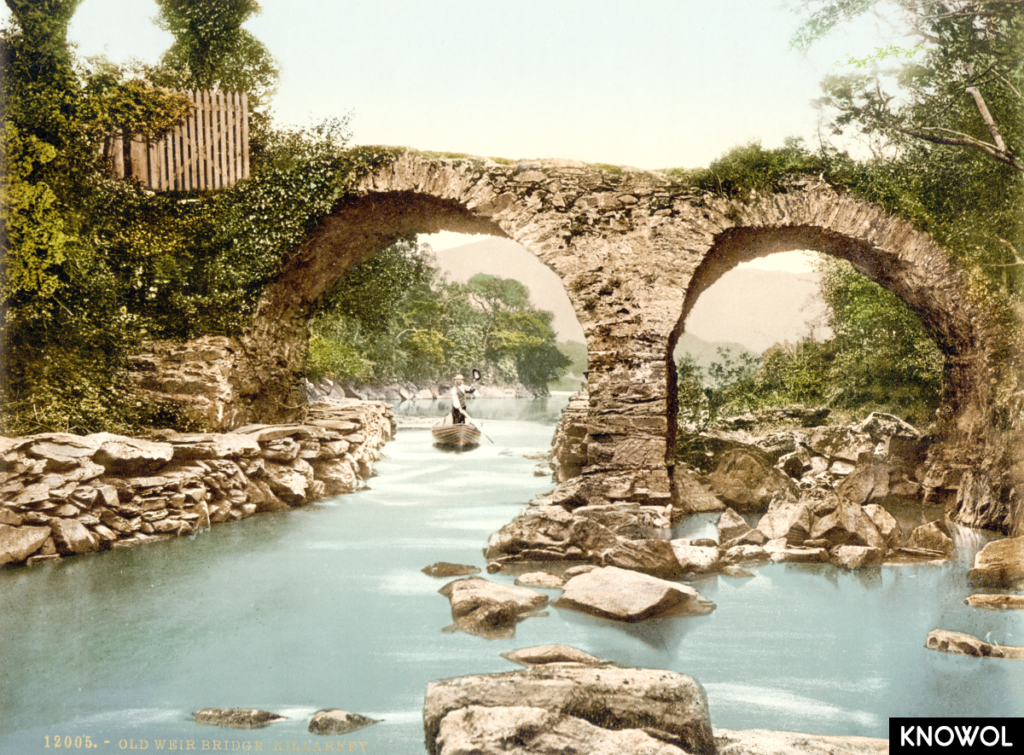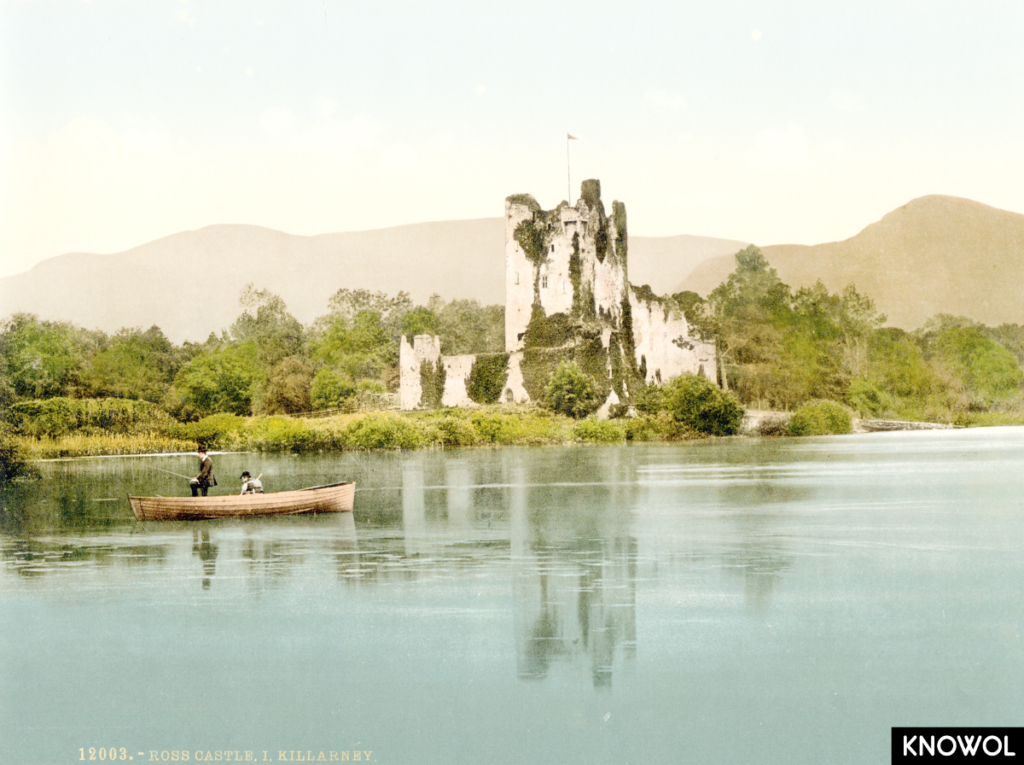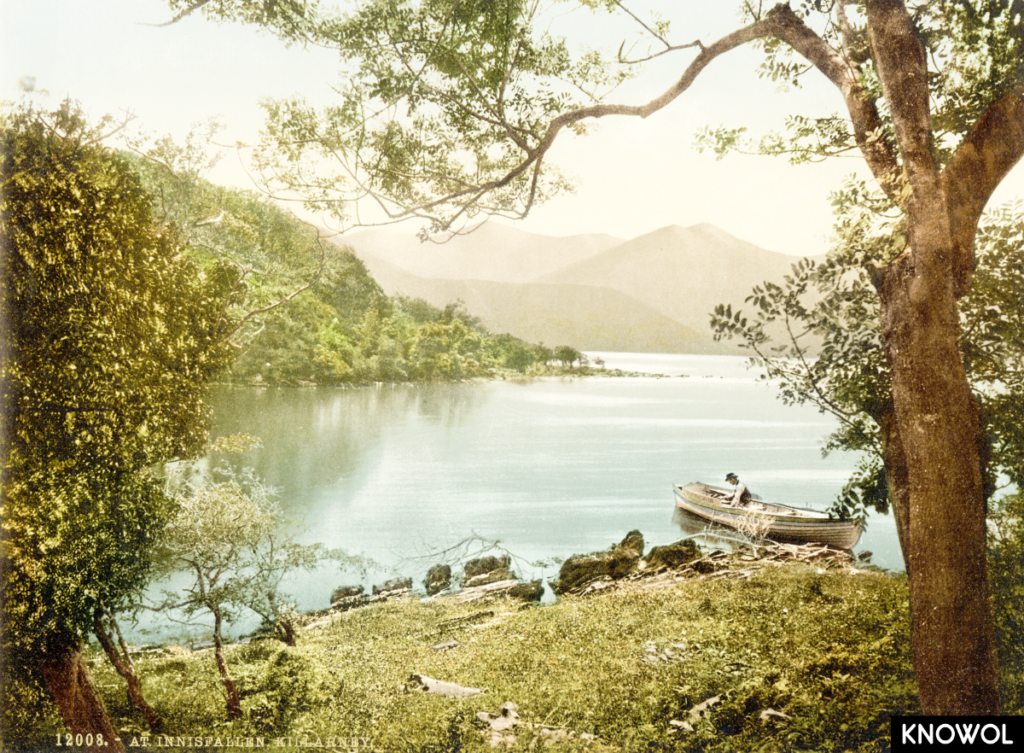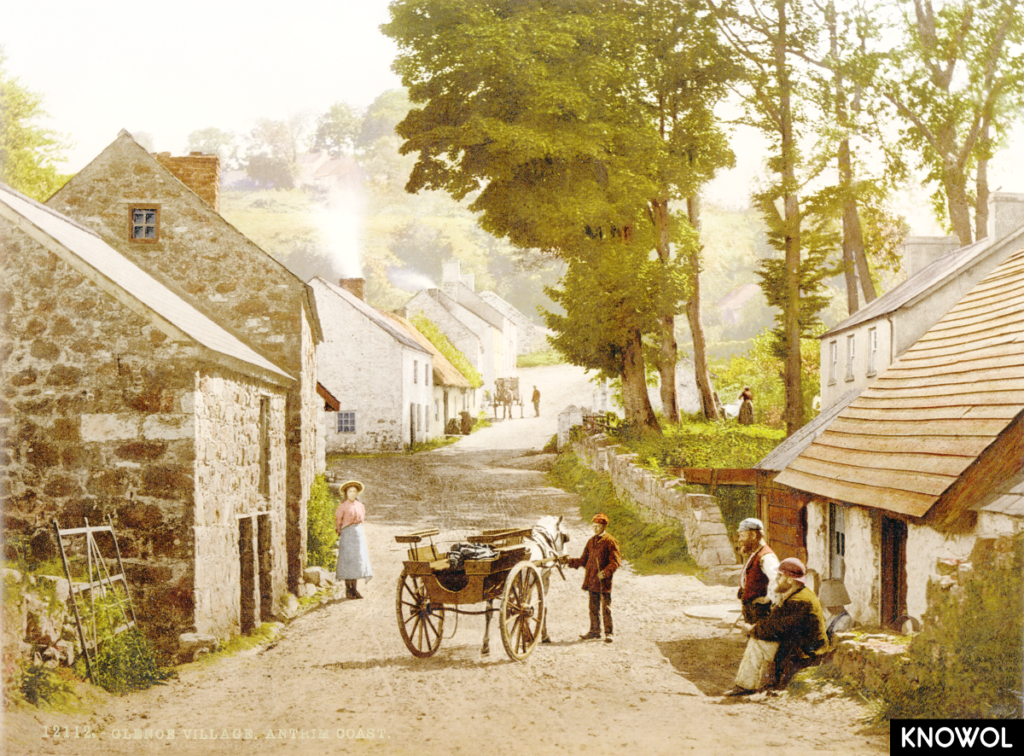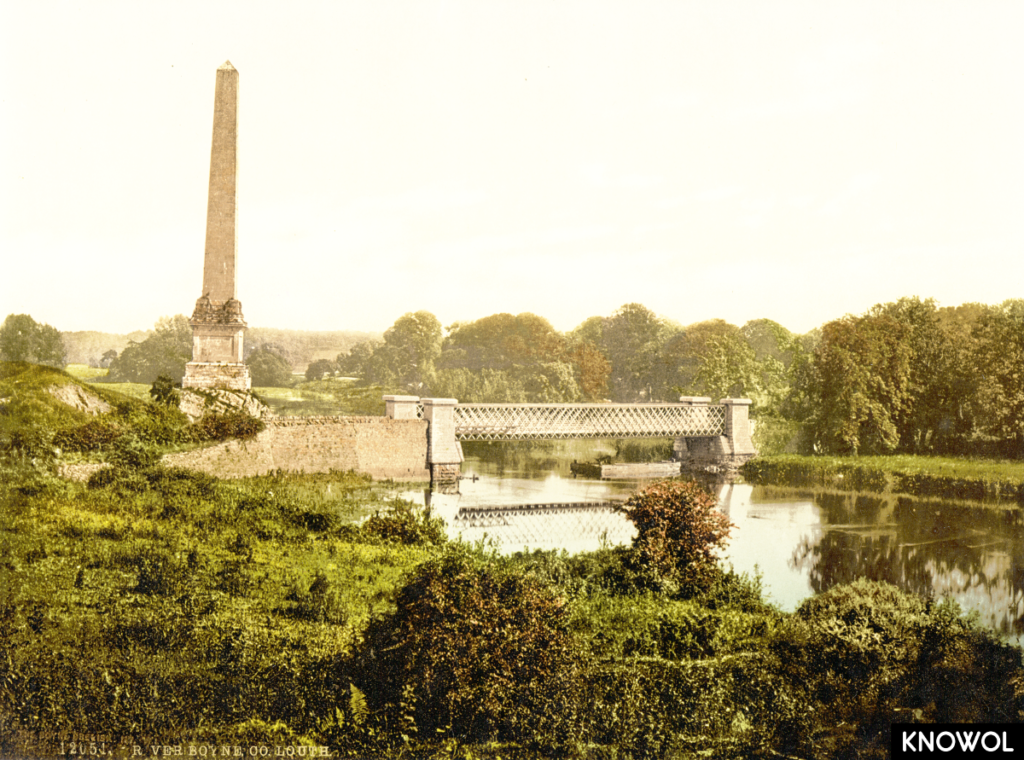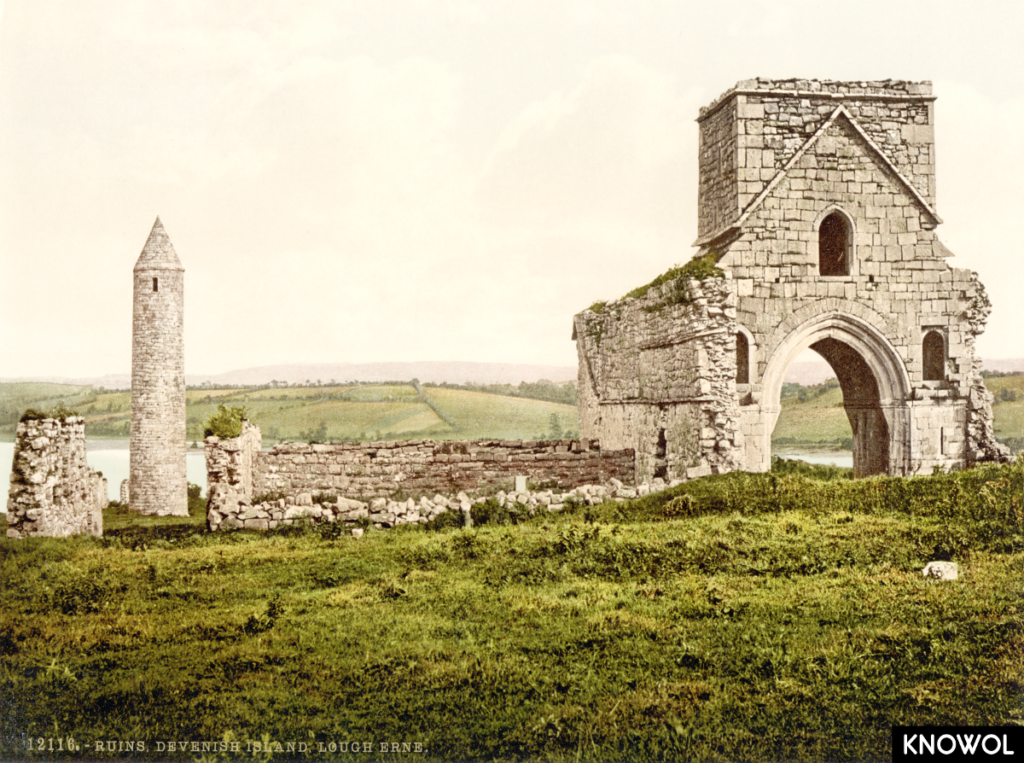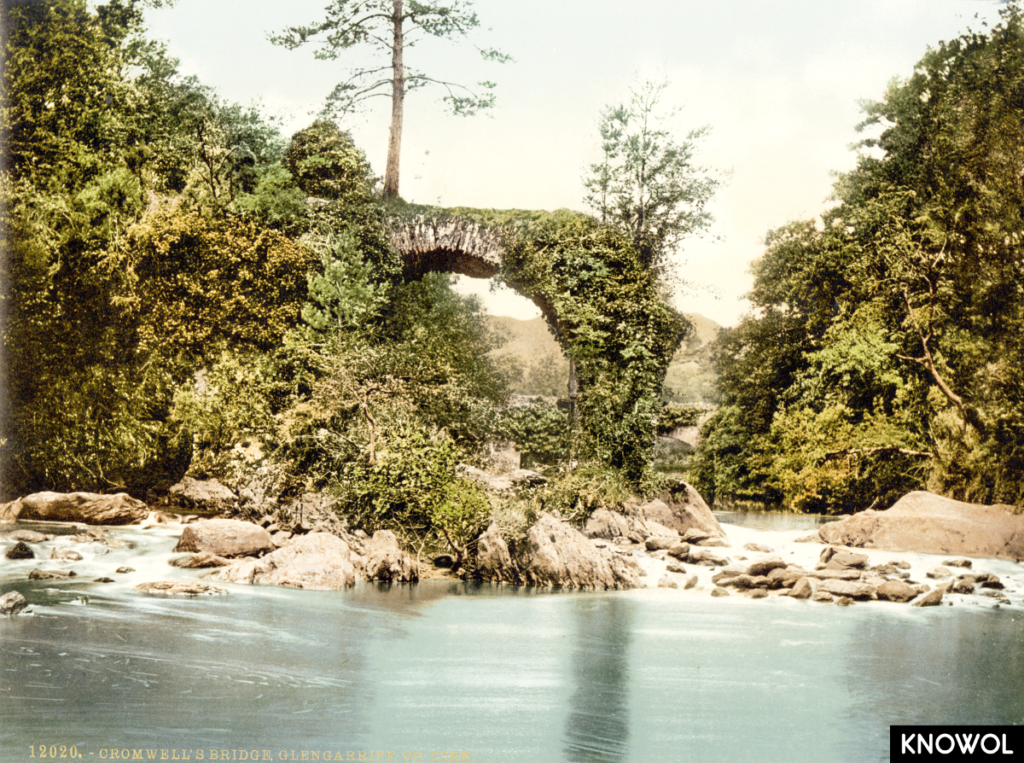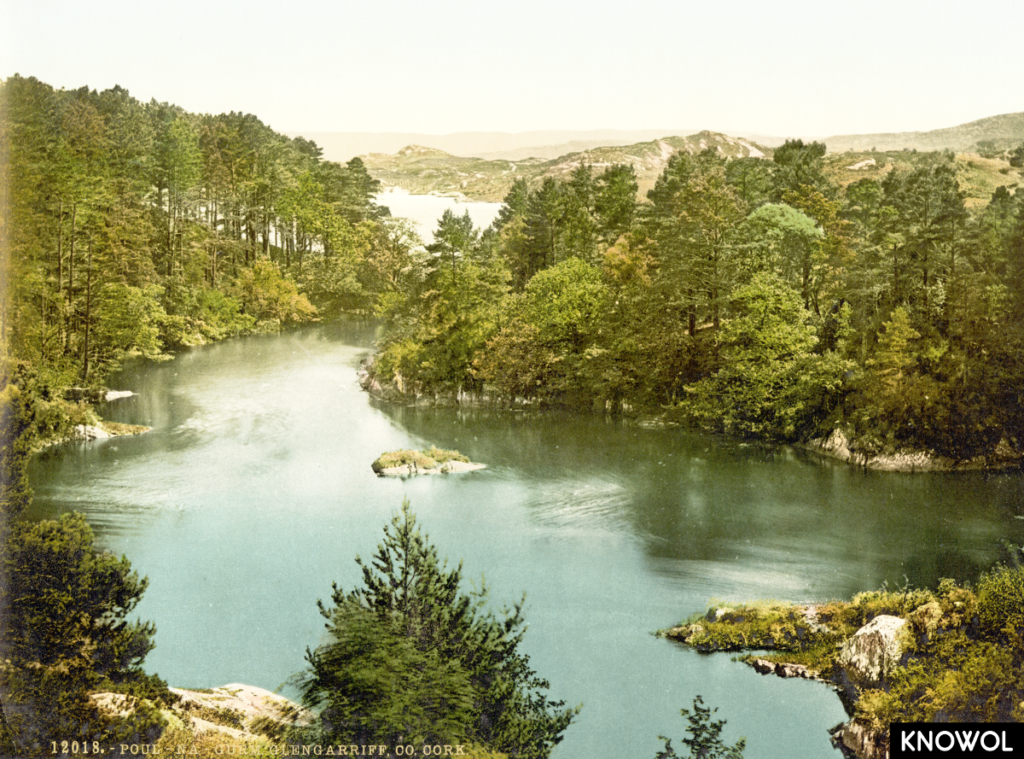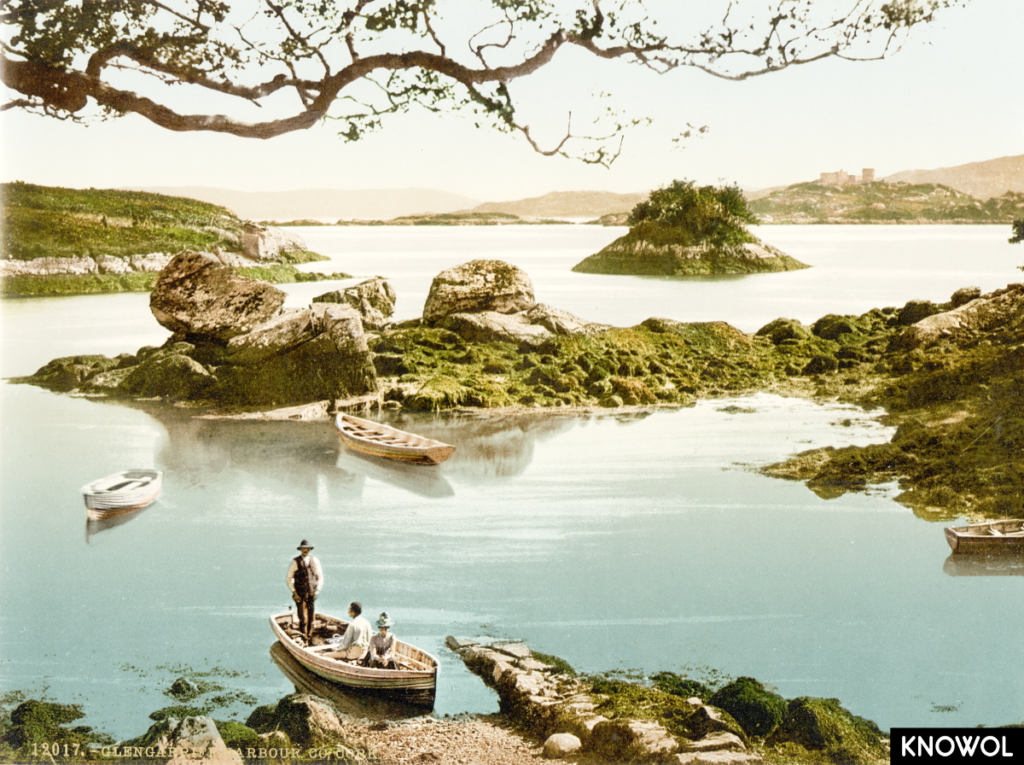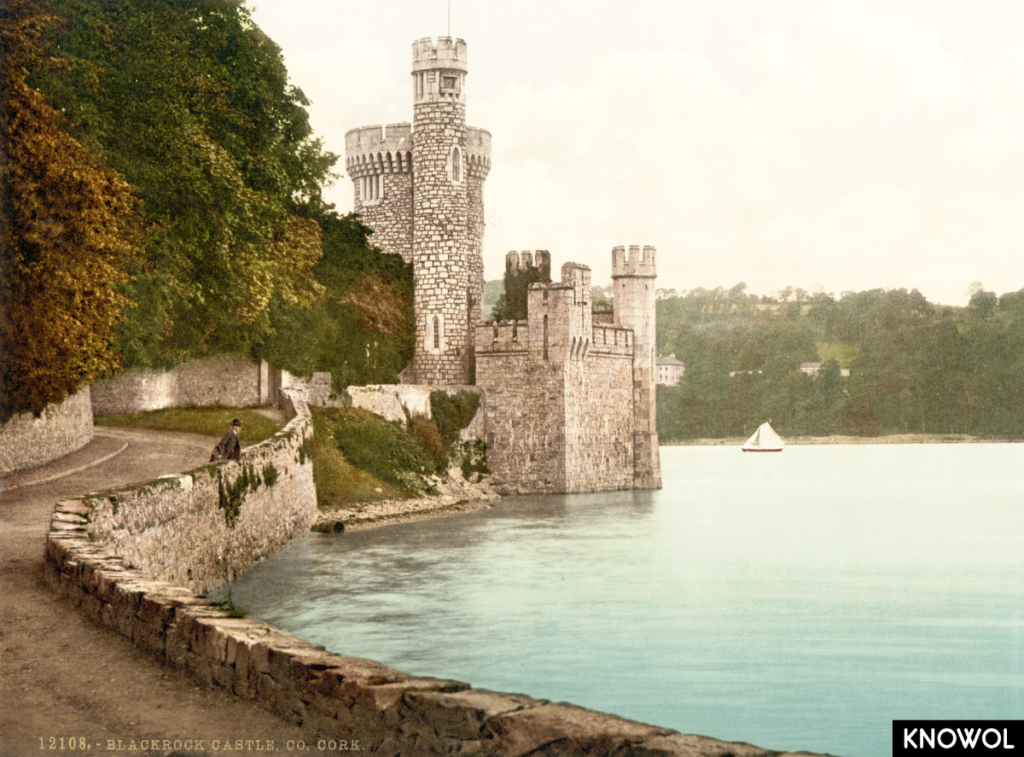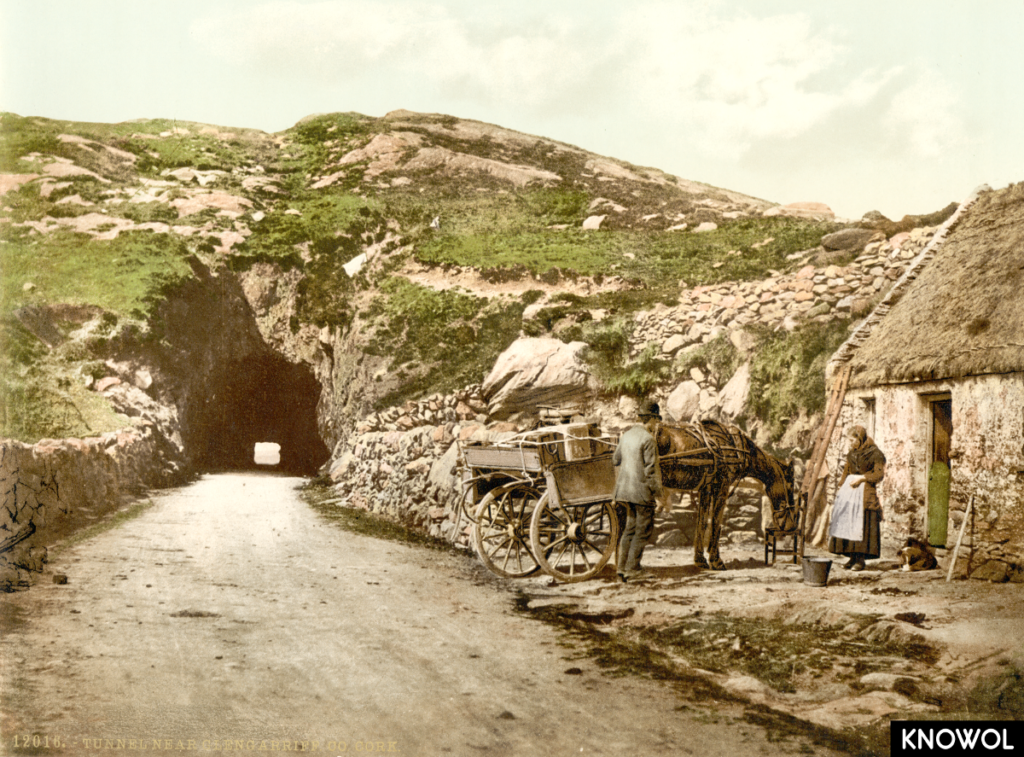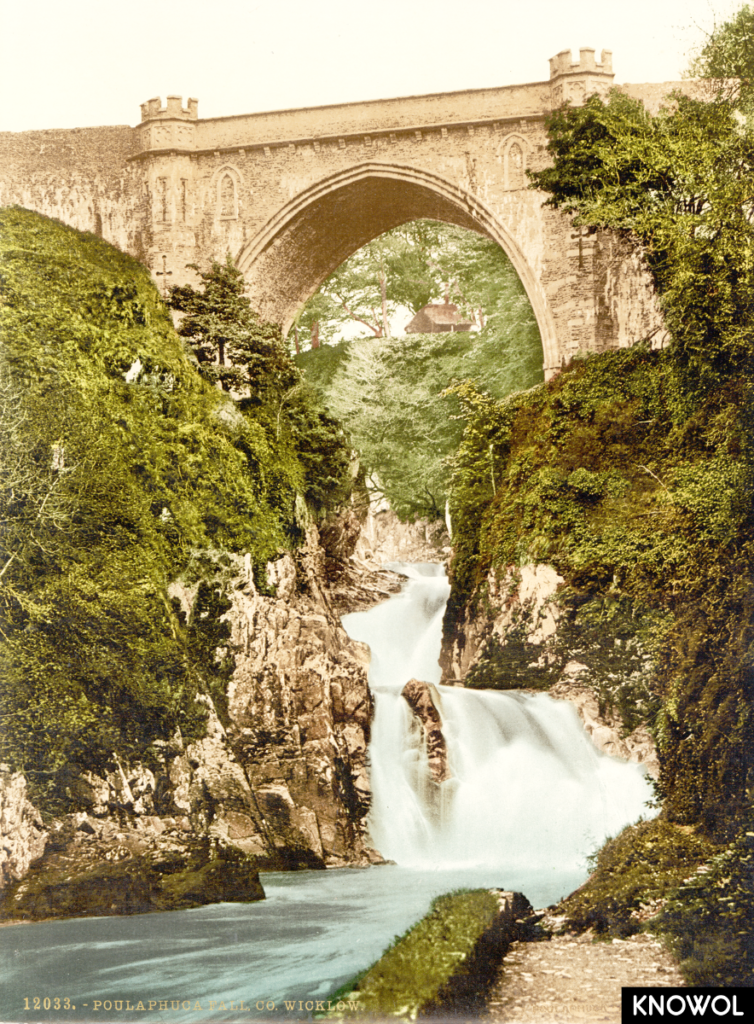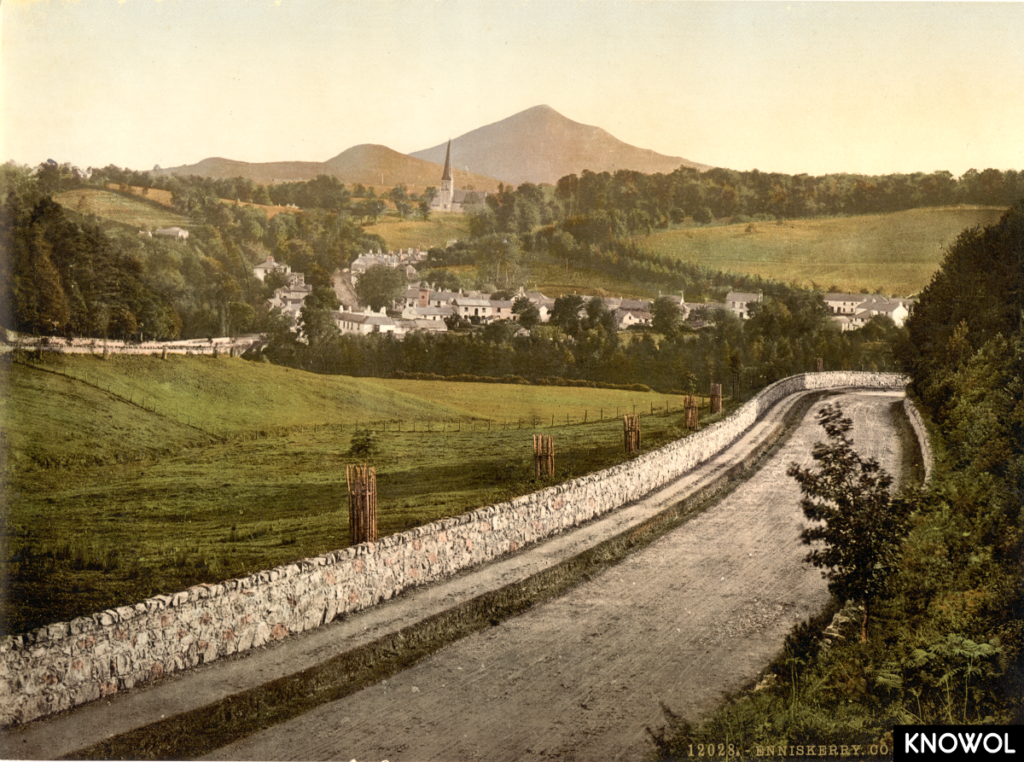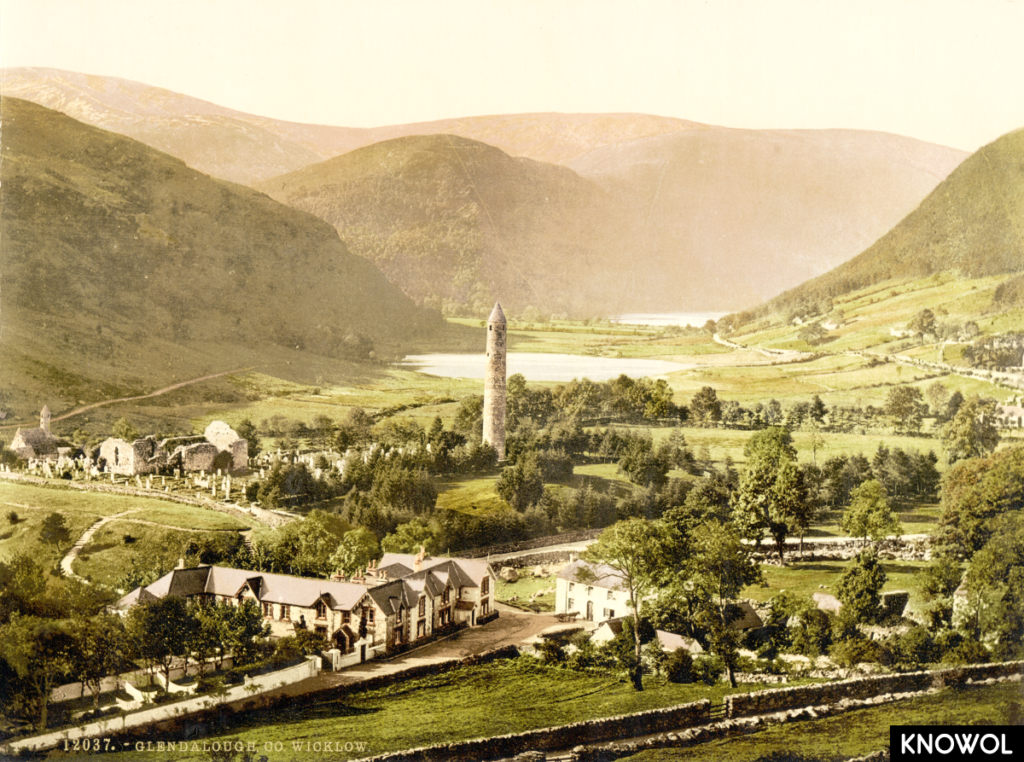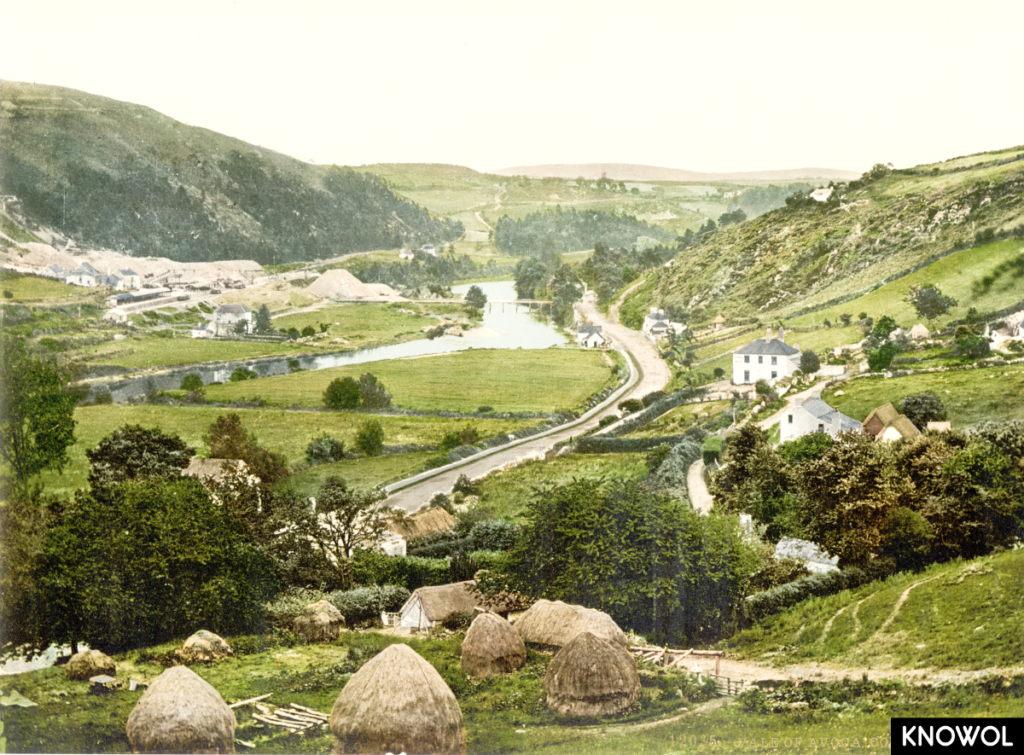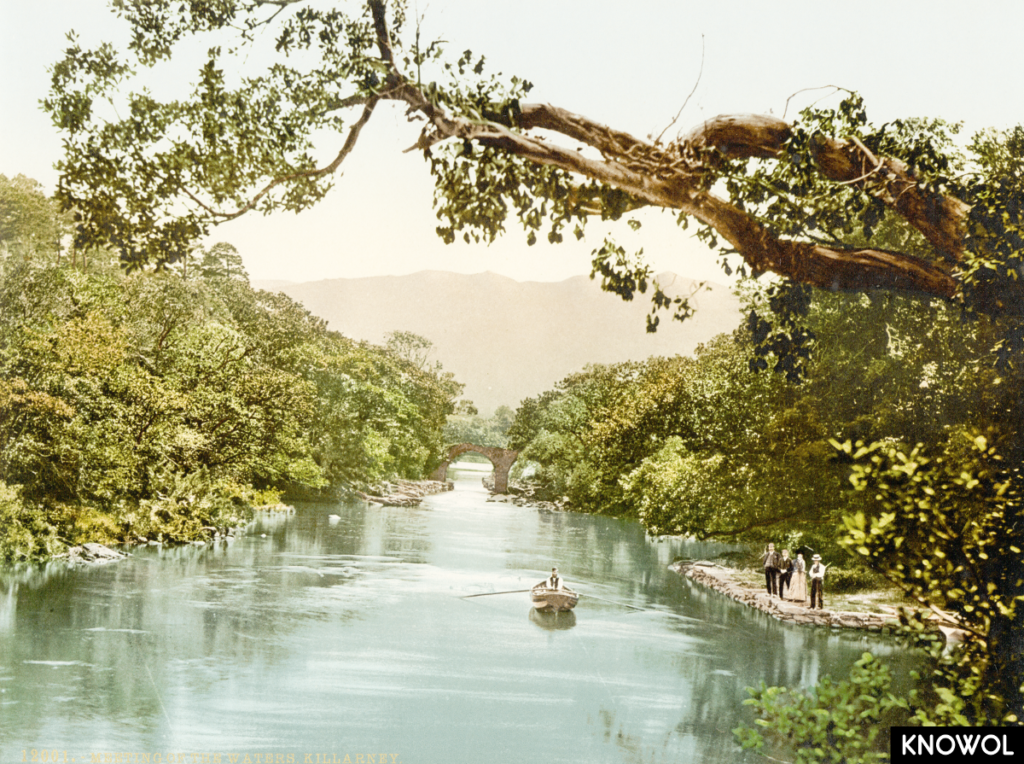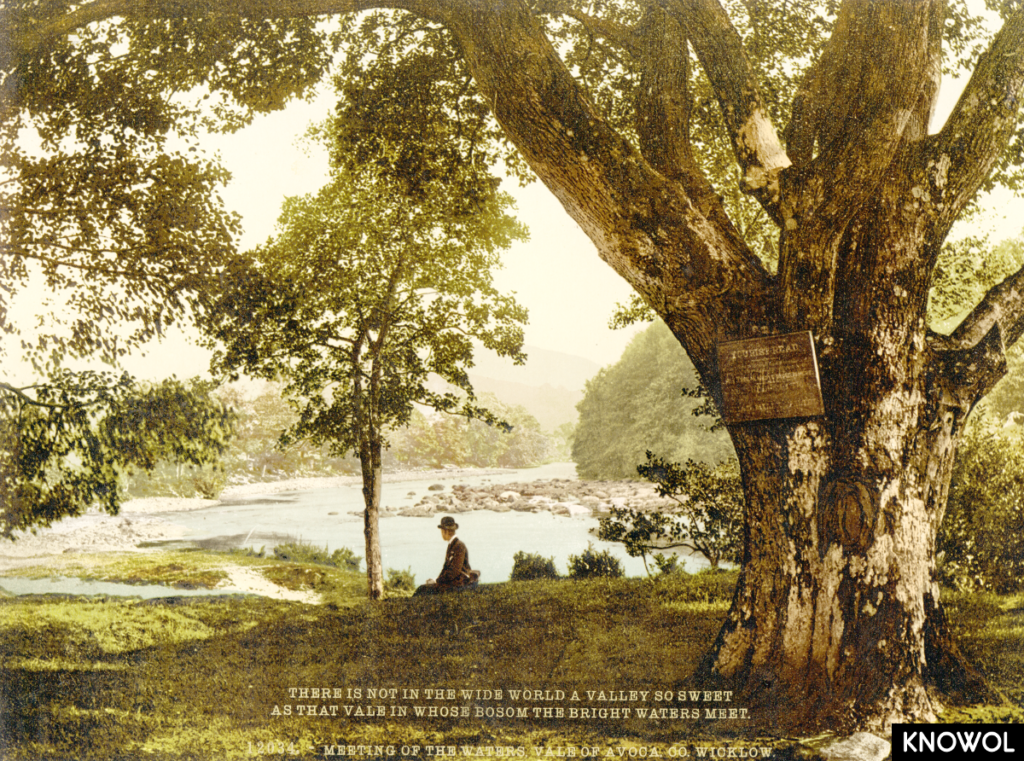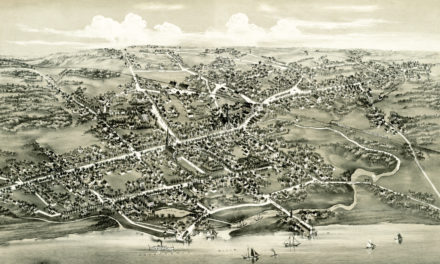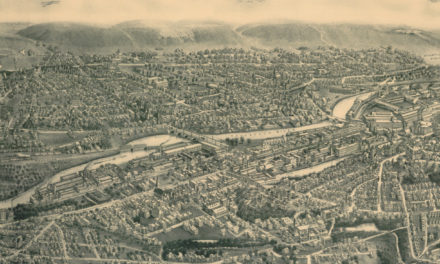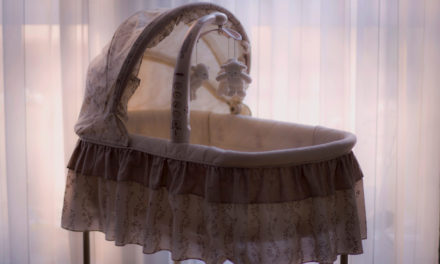These beautiful images of Ireland’s countryside were captured in the year 1890. These richly colored images look like photographs but are actually ink-based photolithographs, a more advanced method that beautifully captured the wonderful sights of Ireland.
Cliffs of Moher in County Clare, Ireland
The Cliffs of Moher are one of the most popular tourist destinations in Ireland. 300-million-year-old river channels cut through the base of the cliffs.
Steuchans of Giant’s Causeway, County Antrim, Ireland
The Giant’s Causeway is a mass of over 40,000 basalt columns formed by a rapid cooling of lava hitting the sea. The conical hills are called ‘the Steuchans’ or ‘Stookins,’ from being shaped like stooks of grain.
The Honeycombs of Giant’s Causeway
Folklore ascribes the formation to a mythical race of giants who laid down the rocks on the sea floor as a roadway between the Scottish Hebridean islands and Ireland. Some of the structures in the area, having been subject to several million years of weathering, resemble objects. This area is called “The Honeycombs”.
Pleaskin Head, Giant’s Causeway
Pleaskin is a cliff connected to the Causeway, and is one of the highest and most beautiful cliffs in the region, with scenic views of Ireland’s extraordinary coast.
Dunluce Castle, County Antrim, Ireland
The Castle of Dunluce was the ancient residence of the Earls of Antrim, and is about two miles from The Giant’s Causeway. The rock on which the castle was built was a stronghold of the native Irish, as implied in the word Dun. Two other places on the Antrim coast, Dunseverick and Duneynie, have the same characteristic features of natural rock fortresses. The original fortress was defended by steep rocky cliffs on all sides, and the only entrance was a draw-bridge connected to a projecting point of rock that was separated from the mainland by a deep chasm about twenty feet wide.
Cave Hill in Belfast, County Antrim, Ireland
Cave Hill is a basaltic hill overlooking the city of Belfast, Northern Ireland.
Rope Bridge, Carrick-a-Rede, County Antrim, Ireland
Carrick-a-Rede Rope Bridge is a famous rope bridge in County Antrim, Ireland. The bridge links the mainland to the tiny island of Carrickarede. Salmon fishermen have been building bridges to the island for over 350 years, but the bridge is now mainly a tourist destination. The original bridge was a swinging bridge of ropes that had to be crossed quickly to keep the bridge from swinging wildly back and forth.
Black Cave Tunnel. County Antrim, Ireland
Blackcave Tunnel at the south end of the bay is an icon of the Antrim Coast Road. This challenging feat of engineering was created between 1832-1842.
Falls in Glenariff. County Antrim, Ireland
Glenariff is a picturesque waterfall enclosed on the side by a high, steep mountain and surrounded by green slopes. The main waterfall, named Isnaleara, is supplied by the stream which comes down the center of the Glen, and reaches the sea at Red Bay.
Rustic Bridge in Glenariff. County Antrim, Ireland
A cantilever rustic bridge (a miniature Forth Bridge), which crossed the Parkmore River.
The Dargle Bridge. County Wicklow, Ireland
The Dargle Bridge was just below the confluence of the Cookstown (or Enniskerry) stream with the Dargle stream.
Sugar Loaf Mountain from Powerscourt Estate
Powerscourt Estate is a large country estate in Enniskerry, County Wicklow, Ireland. The house was originally a 13th century castle, but has been extensively altered. The home remains a popular tourist destination and is now a hotel. In the distance you can see Sugar Loaf Mountain. Popularly mistaken for a volcano, Sugar Loaf is actually an erosion-resistant metamorphosed sedimentary deposit from the deep sea.
Ballynahinch Lake & Castle
A view of Ballynahinch Lake with Ballynahinch Castle in the distance.
Kilkenny Castle
Kilkenny Castle is a castle in Kilkenny, Ireland built in 1195 to control a crossing point of the River Nore and the junction of several routeways. Kilkenny Castle has been an important site since Richard de Clare, 2nd Earl of Pembroke, commonly known as Strongbow constructed the first castle, probably a wooden structure, in the 12th century.
Menawn Cliffs, Achill Island
Menawn Cliffs is a cliff in County Mayo near Glennanaff, Mweelin and Achill Island.
Old Weir Bridge, Killarney
The Old Weir Bridge is an ancient bridge located in Killarney National Park in County Kerry, Ireland. It is a twin arch bridge made of stone. The bridge is situated at the “Meeting of the Waters”, where the three Killarney lakes meet.
Ross Castle, I, Killarney
Ross Castle was built in the late 15th century by the local ruling clan, the O’Donoghue’s. The Irish had a prophecy that Ross could never be taken until a warship could swim on the lake, an unbelievable prospect at the time. It was eventually taken when artillery was brought by boat via the River Laune.
Innisfallen, Killarney. County Kerry, Ireland
Innisfallen Island is an island in Lough Leane; one of the three Lakes of Killarney in County Kerry, Ireland.
Innisfallen is home to the ruins of Innisfallen Abbey, one of the most impressive archaeological remains dating from the early Christian period found in the Killarney National Park. The monastery was founded in 640 by St. Finian the Leper, and was occupied for approximately 950 years. Over a period of about 300 years, the monks wrote the Annals of Innisfallen, which chronicle the early history of Ireland as it was known to the monks. The abbey was taken from the monks on August 18, 1594, by Elizabeth I.
Glenoe Village. County Antrim, Ireland
Glenoe or Gleno is a hamlet in County Antrim, Northern Ireland. In the 2001 Census, it had a population of 87 people.
River Boyne. County Louth, Ireland
The River Boyne is a river in Leinster, Ireland that has been known since ancient times. In Irish mythology it is said that the river was created by the goddess Boann. The picture shows the Boyne obelisk, which commemorates the Battle of the Boyne, a major battle in Irish history.
Devenish Island Ruins, Lough Erne
Devenish Island is an island in Lower Lough Erne, County Fermanagh, Northern Ireland. Devenish contains one of the finest monastic sites in Northern Ireland. This picture shows a round tower thought to date from the twelfth century.
Cromwell’s Bridge, Glengariff
Cromwell’s Bridge was a bridge made of stone with a winding road that crossed the Glengariff River right at the mouth of the village of the same name in County Cork, Ireland. The original engraving from 1842 said there were originally five arches.
Glengariff Harbor. County Cork, Ireland
Glengarriff is a small seaside village in County Cork, Ireland that is home to this beautiful harbor.
Glengariff Harbor. County Cork, Ireland
Glengarriff harbor is a very safe and sheltered anchorage for boats.
Blackrock Castle. County Cork, Ireland
Blackrock Castle was originally developed as a coastal defense fortification in the 16th century to protect upper Cork Harbour and port. In the late 16th century, the citizens of Cork appealed to Queen Elizabeth I to construct a fort at Blackrock to “repel pirates and other invaders”. In 1582 a fortification was built on the site, and later around 1600, a round tower was constructed to safeguard against pirates “carrying away” vessels entering the harbor.
Tunnel near Glengarriff. County Cork, Ireland
A tunnel on the road to Glengarriff.
Poulaphouca Waterfall. County Wicklow, Ireland
The Poulaphouca waterfall was a grand waterfall formed from the head of the Liffey river. It was renowned for its beauty and had paths to the area around the waterfall, but the waterfall was lost with the construction of the Poulaphouca Reservoir.
Enniskerry. County Wicklow, Ireland
Enniskerry is a village in County WIcklow, Ireland. The town is situated on the Glencullen River in the foothills of the Wicklow Mountains.
Glendalough. County Wicklow, Ireland
Glendalough is a glacial valley in County Wicklow, Ireland, renowned for an Early Medieval monastic settlement founded in the 6th century by St Kevin.
Blackwater River, Lismore, County Waterford
The Blackwater is a river which flows through counties Kerry, Cork, and Waterford in Ireland. It rises in the Mullaghareirk Mountains in County Kerry and then flows in an easterly direction through County Cork, through Mallow and Fermoy.
Vale of Avoca, County Wicklow, Ireland
Avoca is a beautiful village located in the Vale of Avoca in County Wicklow. It is around 45 miles from Dublin. The village of Avoca is situated on the river of the same name.
Meeting of the Waters, Killarney. County Kerry, Ireland
The Avoca starts life as two rivers, the Avonmore (“Big River”) and the Avonbeg (“Small River”). These join together at a spot called the Meeting of the Waters in the Vale of Avoca, which is considered a local beauty spot. This image shows the area between Lough Leane (the lower lake) and Muckross (the middle) Lake.
The village of Avoca is situated on the river.
Meeting of the Waters, Vale of Avoca
Thomas More wrote a song on the Vale of Avoca, featuring the line “There is not in the wide world a valley so sweet, As the vale in whose bosom the bright waters meet.”
If you enjoyed this beautiful tour of Ireland, share with your friends using the buttons below!

